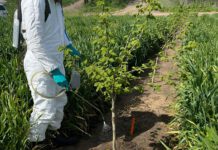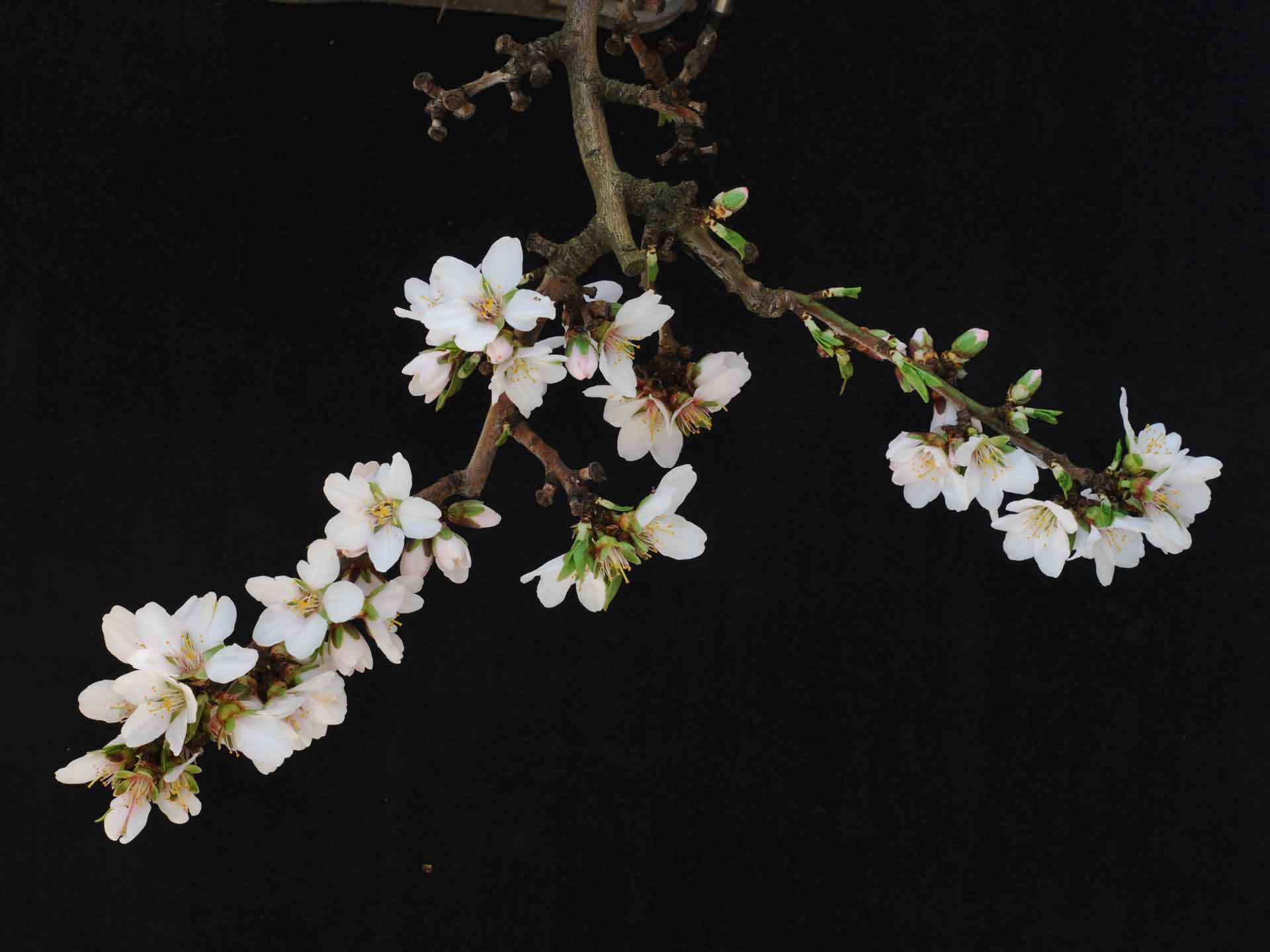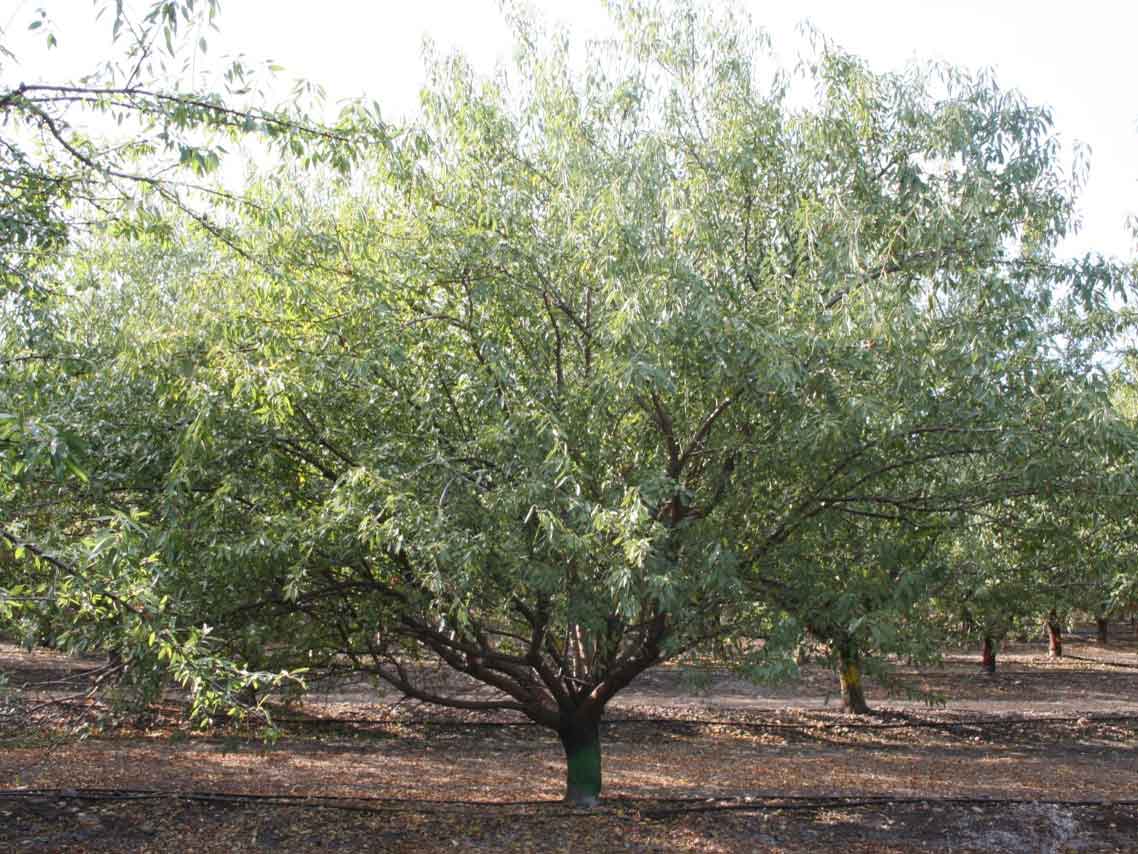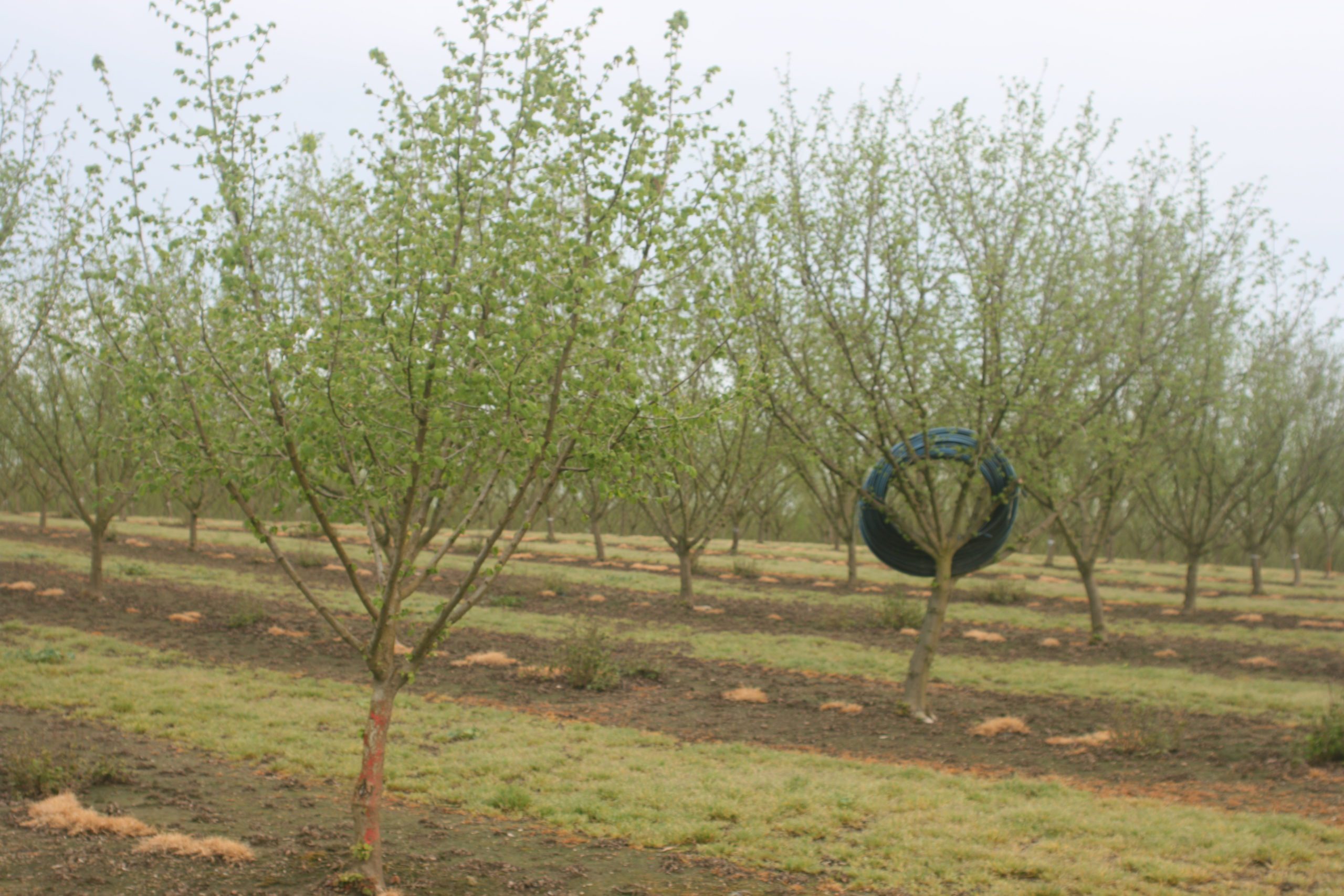
Listen to the audio version of this article. (Generated by A.I.)
For hazelnut grower Wayne Steenson, going organic seemed the right thing to do, both for the environment and for the long-term sustainability of his farm. And going all in, rather than transitioning slowly, seemed the best approach.
“I think that going fully organic, just taking the whole plunge, works better than going halfway,” he said. “I’m trying to establish these synergistic relationships between the microbial population and the fungal populations in the soil, and I think that by adding things like nitrogen, it interferes with that.”
Steenson is among a dozen or so Oregon hazelnut growers who are blazing a trail by going organic. The movement recently received an injection of enthusiasm with the launch of a USDA-funded marketing campaign that has organic producers hoping more growers take the plunge.
But the movement has not been without its difficulties, both in the field as growers transition out of conventional to organic production, and at the processor level.
Transitioning out of conventional hazelnut production to organic has been difficult for Steenson in part because of what Oregon State University Extension Tree Fruit and Nut Specialist Todd Anderson attributed to “replant disorder,” a disorder affected by pests and diseases lingering in the soil from decades of farming conventionally and attacking young trees.
“Our main tool is growing a really healthy cover crop, which pulls the insects down out of the trees into the cover crop on the orchard floor where there is a lot more competition, a lot more beneficial insects, and a lot of bird habitat as well.”
– Ben Larson, My Brothers Farm
In Steenson’s case, issues cropped up after he transitioned land that had been in conventional hazelnut production for more than 50 years to organic production.
“There are 50 years of pests and diseases that have built a home here and then you take out those trees and have baby trees growing right where you had the established orchard, so it can cause issues,” Anderson said.
The mature trees that Steenson pulled out were more capable of withstanding the effects of the pests and diseases than the two- and three-year-old trees now inhabiting the orchard, Anderson said.
“It is just something that will have to be dealt with,” Anderson said, who added that Steenson may have to take out some of the less vigorous trees at some point.
The disorder was exacerbated by the fact that Steenson may have planted the new orchard too soon after recycling the old orchard into the soil. Steenson took out the old orchard, which was planted to the Barcelona variety in 1968, after they were damaged in an ice storm in 2021. Feeling the need to ramp up production as soon as possible to maximize cash flow, he replanted the orchard just a few months after turning under the old orchard.
“I think I needed to let it sit for a couple of years after incorporating all those chips, all that organic matter into the soil before planting,” Steenson said. “So this has been a little difficult to get established.” Steenson said he believes coming in too soon has created an unbalance in the soil’s carbon-nitrogen ratio. Anderson said OSU typically advises that growers wait two years before planting back when doing whole orchard recycling.
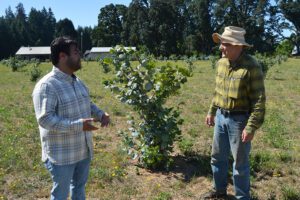
Established Orchards
Controlling pests and diseases in established organic orchards can also set back hazelnut production, Anderson said, and often it is because growers overreact.
“I think one of the biggest issues is a tendency to overcorrect,” Anderson said. “When growers see an outbreak, they tend to overcorrect and cause more problems. They apply these wide-spectrum organic pesticides that may kill a lot more than the target species. If you’re not careful, you can kill predatory insects in the orchard as well as the target species, and then that can set things off.
“Understanding how much loss you can tolerate is really important and knowing what a reasonable reaction is is important both cost-wise and environmentally,” Anderson said.
Another issue affecting organic hazelnut growers is occurring at the processor level. To date, there is only one processor in Oregon certified organic, and organic hazelnut growers have to wait until conventional crop is processed before getting their turn, Steenson said.
“I think that going fully organic, just taking the whole plunge, works better than going half way.”
– Wayne Steenson, grower
Yield Drop
And because organic yields typically don’t approach conventional yields, turning a profit with organic hazelnuts has not been without its challenges. In general, organic hazelnut yields are off by about 15% from conventional hazelnut yields, according to Ben Larson of My Brothers Farm, an organic hazelnut producer from Creswell, Ore.
“There is a lot of variability out there, but that is what I gather from other organic growers,” Larson said.
Production costs, meanwhile, can be similar between organic and conventional hazelnut production, although again, production costs vary widely between producers. Some pay hefty prices for costly nonsynthetic pesticides. Others, like the Larsons, spend very little on organic pesticides, relying instead on cover crops, beneficial insects and other less invasive approaches to protect their nut crop.
“Our main tool is growing a really healthy cover crop, which pulls the insects down out of the trees into the cover crop on the orchard floor where there is a lot more competition, a lot more beneficial insects, and a lot of bird habitat as well,” Larson said.
“And they can eat the cover crop,” he added. “That is totally fine. We are fine with a little bit of loss in the cover crop as long as they’re keeping the trees healthy.”
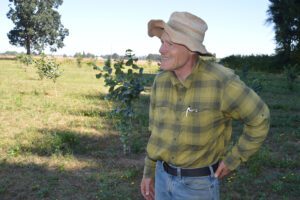
Prices paid for organic hazelnuts, meanwhile, have provided growers a nice premium, at times as much as $1 a pound over conventional. Organic prices have hovered between $1.60 and $1.80 a pound over the past five years, Larson said, while conventional prices over that same period have hovered between 50 cents and $1 for the most commonly produced varieties.
The hope now among organic growers is that those premiums increase behind the effects of the organic hazelnut marketing campaign that was launched May 30. Funded by a grant from the USDA Organic Market Development Program, the campaign is utilizing an online hub, OrganicHazelnuts.org, to educate consumers on the nutritional value of the crop, as well as the environmental benefits of growing hazelnuts organically. The campaign includes collaborations with chefs, who integrate organic hazelnuts into recipes, and social media posts that highlight the collaborations and creations. Further, the campaign includes a communications strategy that incorporates sustainability stories from organic hazelnut farmers, virtual farm tours and other communications.
“We are really excited about the project,” said Larson, who helped write the grant. “Right now there is not enough supply of organic hazelnuts to meet the market needs. So, with this marketing campaign that we’re working on, we’re hoping to attract more growers and keep the premium high. And actually, we’d like to see it go higher.”








